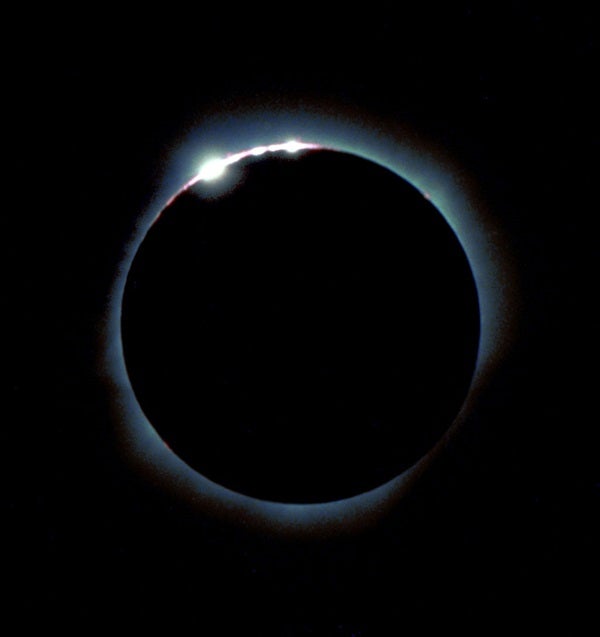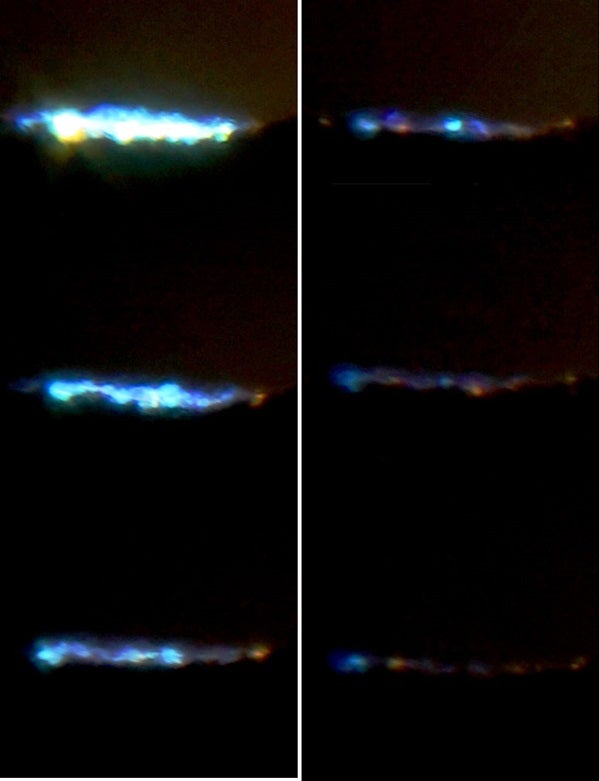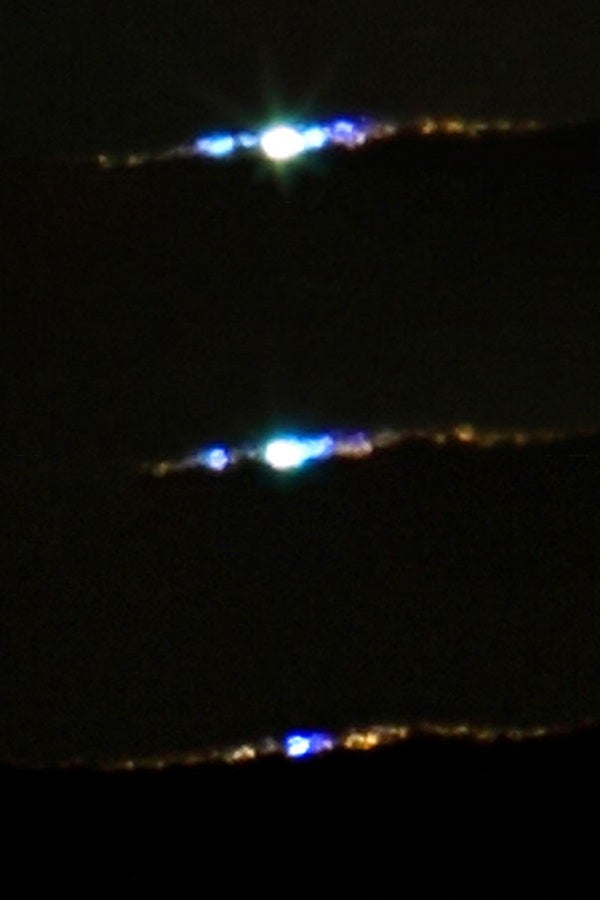One of the most anticipated phenomena immediately preceding the total phase of a solar eclipse is the sudden and remarkable appearance of Baily’s beads. About 15 seconds before the onset of totality, the Moon’s advancing limb (edge) starts to split the Sun’s slender crescent into drops of liquid sunshine — a result of our star’s light passing through valleys along the ragged lunar limb. What’s more, just before the “door” on the Sun slams shut and totality begins, it’s possible to catch ruby beads (glimpses of the middle stellar atmosphere, the chromosphere) mingling with the solar diamonds.
Bailey’s beads appear just prior to and just after totality during a solar eclipse. The phenomenon is named after English astronomer Francis Bailey, who greatly promoted its appearance in 1836 and first suggested that the beads form when sunlight streams through lunar valleys along the Moon’s edge. Jacques Guertin
But did you know it’s possible (though challenging) to see colored beaded phenomena on crystal-clear days whenever Earth’s horizon rotates “up” to eclipse the Sun at sunset? Under ideal atmospheric conditions, the last glimpse of sunlight might glow dramatically with an emerald or sapphire sheen; I like to imagine this colored “flash” as the wisp of smoke visible just after snuffing out a candle flame. Sometimes, if the distant horizon is low, sharp, and irregular, such as a bare mountain ridge or undulating ocean horizon, this “dying” gasp of sunset may also splinter into a bejeweled necklace.
A word of caution
If you’re planning to look visually, it’s imperative to take safety precautions to avoid inadvertently staring for extended periods directly at the Sun, no matter how small the area of sunlight.
I suggest using safe solar filters, available from reputable dealers, to view the Sun as the horizon begins to cover it. Then, just before the Sun’s upper rim slips out of view, quickly remove the filter from your eyes. If you’re using binoculars, make sure you have safe solar filters that fully cover both front objectives — not the rear eyepieces where the focused light can burn through or crack the filters.
If you’re planning to look visually, it’s imperative to take safety precautions to avoid inadvertently staring for extended periods directly at the Sun, no matter how small the area of sunlight.
I suggest using safe solar filters, available from reputable dealers, to view the Sun as the horizon begins to cover it. Then, just before the Sun’s upper rim slips out of view, quickly remove the filter from your eyes. If you’re using binoculars, make sure you have safe solar filters that fully cover both front objectives — not the rear eyepieces where the focused light can burn through or crack the filters.
Gone in a flash
The “flash” (a term that encompasses all aspects of the phenomenon, which can vary in length, breadth, color, and duration) results from light bending as it passes through the densest part of Earth’s atmosphere near the horizon. As with light shining through a prism, the blue region of the spectrum bends more than the red part. As the atmosphere effectively scatters blue light, the color most often visible in a flash is green. Under exceptional conditions, however, the upper rim of the Sun can appear blue or even violet.
Whatever color you see, the phenomenon lasts just a few seconds. Thus, timing is critical. The photographic blue flash sequence shown at top, taken from an altitude of about 5,000 feet (1,500 meters) on Mauna Loa, Hawaii, spans a mere two seconds. Of it, “green flash” expert Andrew T. Young of San Diego State University in California comments, “The height above sea level is very conducive to getting the blue and violet colors because of the reduced atmospheric reddening.”
The “flash” (a term that encompasses all aspects of the phenomenon, which can vary in length, breadth, color, and duration) results from light bending as it passes through the densest part of Earth’s atmosphere near the horizon. As with light shining through a prism, the blue region of the spectrum bends more than the red part. As the atmosphere effectively scatters blue light, the color most often visible in a flash is green. Under exceptional conditions, however, the upper rim of the Sun can appear blue or even violet.
Whatever color you see, the phenomenon lasts just a few seconds. Thus, timing is critical. The photographic blue flash sequence shown at top, taken from an altitude of about 5,000 feet (1,500 meters) on Mauna Loa, Hawaii, spans a mere two seconds. Of it, “green flash” expert Andrew T. Young of San Diego State University in California comments, “The height above sea level is very conducive to getting the blue and violet colors because of the reduced atmospheric reddening.”
Now it’s your turn. Be safe, and send your results to someara@interpac.net.













